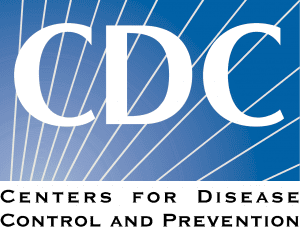- In-hospital Outcomes of Healthcare-associated Coronavirus Disease 2019 (Omicron) Versus Healthcare-associated Influenza: A Retrospective, Nationwide Cohort Study in Switzerland
Investigators conducted a retrospective cohort study of patients with symptomatic healthcare-associated COVID-19 or influenza reported to the nationwide, hospital-based surveillance system in Switzerland. Included patients were adults (aged ≥18 years) hospitalized for ≥3 days in tertiary care and large regional hospitals. They included 2901 patients with symptomatic, healthcare-associated COVID-19 (Omicron) and 868 patients with symptomatic, healthcare-associated influenza from 9 hospitals. We found a similar case fatality ratio between healthcare-associated COVID-19 (Omicron) (6.2%) and healthcare-associated influenza (6.1%) patients; after adjustment, patients had a comparable subdistribution hazard ratio for 30-day in-hospital mortality (0.91; 95% confidence interval, .67–1.24). A similar proportion of patients were admitted to the intensive care unit (2.4% COVID-19; 2.6% influenza).
- Real Clinical Effectiveness of Molnupiravir Against 30-day Mortality Among 74, 41 SARS-CoV-2–Positive Patients: A Nationwide Cohort Study from the Czech Republic
This was a population-wide retrospective cohort study in the Czech Republic. They analyzed all 74,541 patients with an officially registered diagnosis of SARS-CoV-2 infection between 1 January and 31 December 2022, aged 18 years or older, treated with molnupiravir. The primary outcome was 30-day all-cause mortality; the secondary outcome was 30-day COVID-19-related mortality. The use of molnupiravir in adult SARS-CoV-2 positive patients was associated with a lower risk of both 30-day all-cause mortality: adjusted HR 0.58 (95% confidence interval, 0.53–0.64; P < .001) and 30-day COVID-19–related mortality: adjusted HR 0.50 (95% confidence interval, 0.42–0.58; P < .001). The effect of molnupiravir was highly significant regardless of sex, Deyo-Charlson Comorbidity Index score, hospitalization status, COVID-19 vaccination status, and patients older than age 65 years.
Situation Dashboards

World Health Organization (WHO)
Novel Coronavirus (COVID-19) Situation from World Health Organization (WHO)

Johns Hopkins University (JHU)
Coronavirus COVID-19 Global Cases by the Center for Systems Science and Engineering (CSSE) at JHU

COVID-19 in US and Canada
1Point3Acres Real-Time Coronavirus (COVID-19) Updates in US and Canada with Credible Sources

Genomic Epidemiology COVID-19
Genomic Epidemiology of (COVID-19) Maintained by the Nextstrain team, enabled by data from GISAID.






